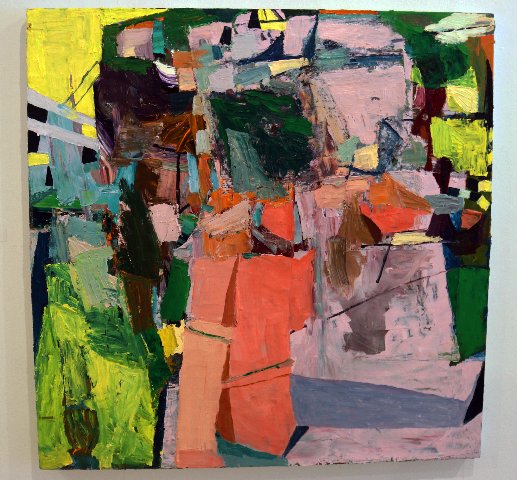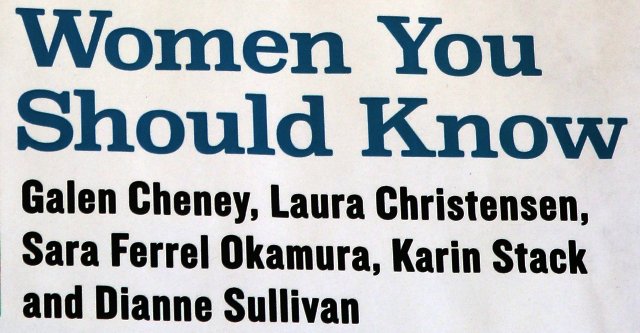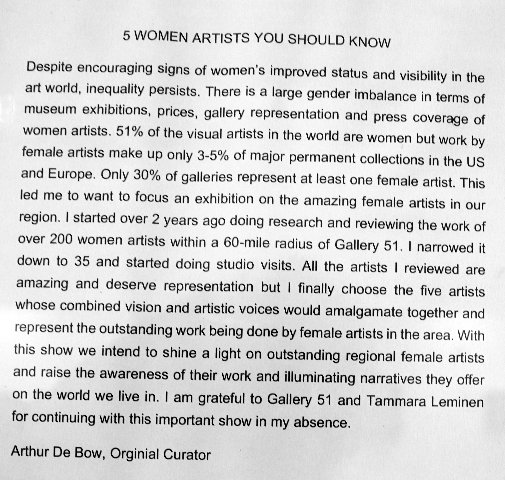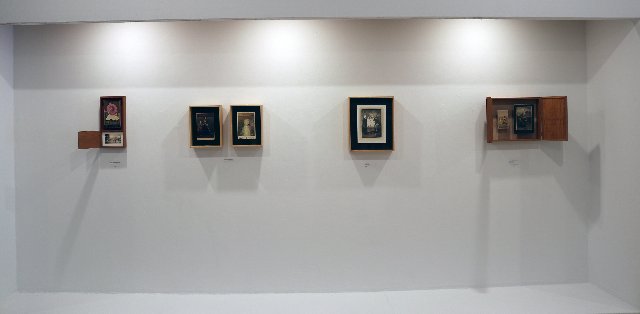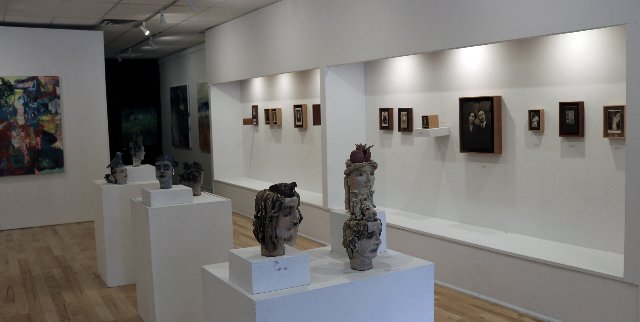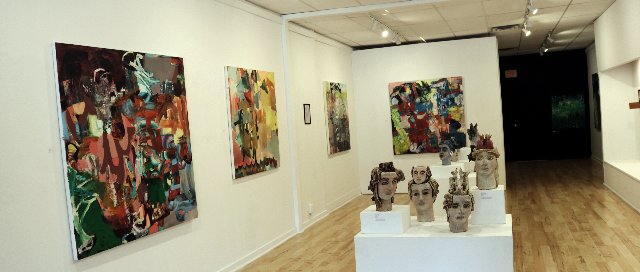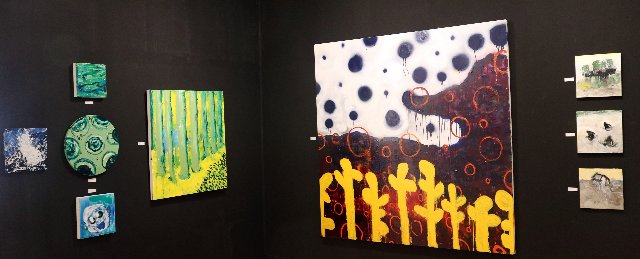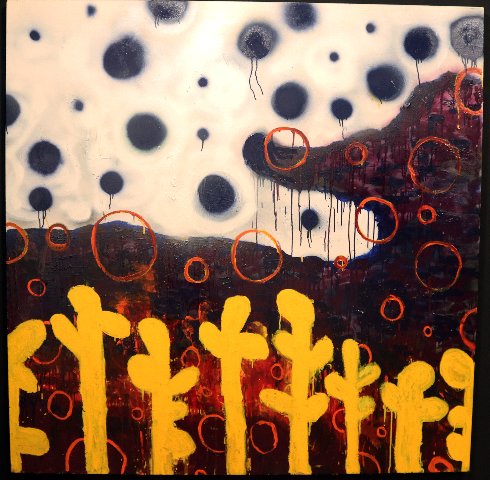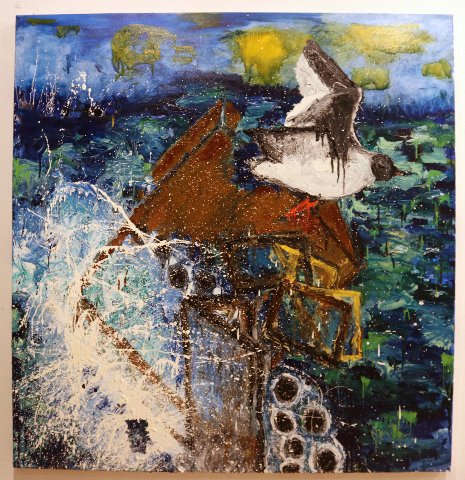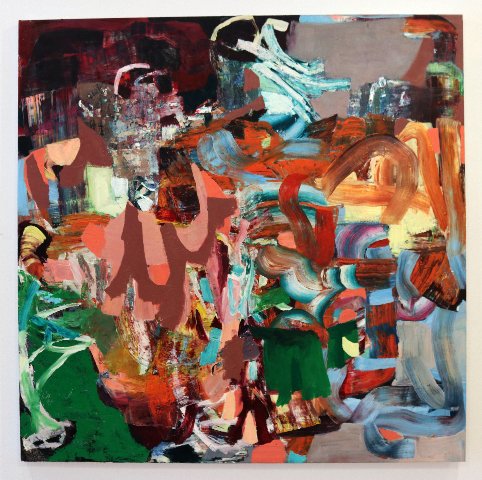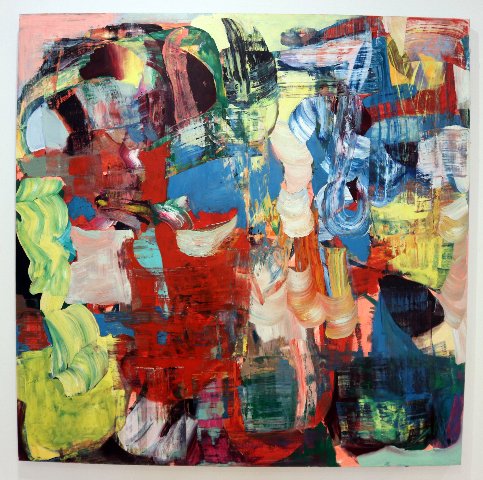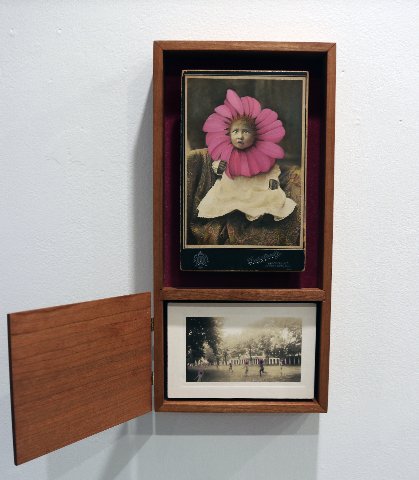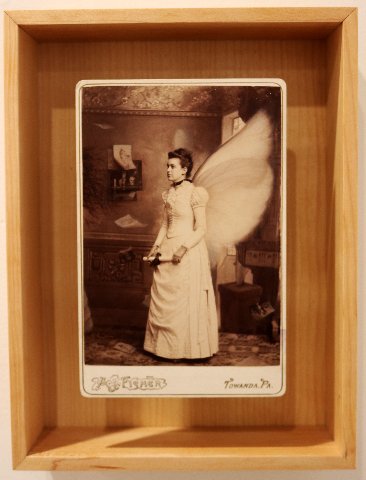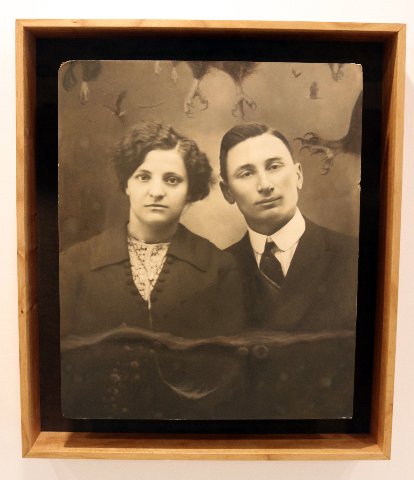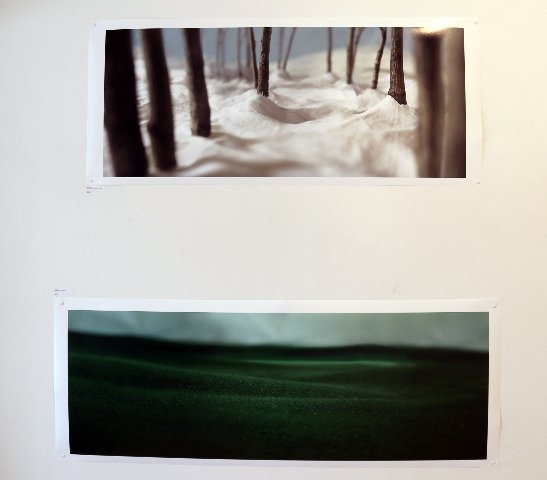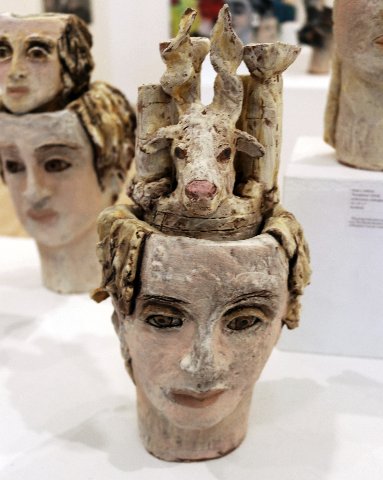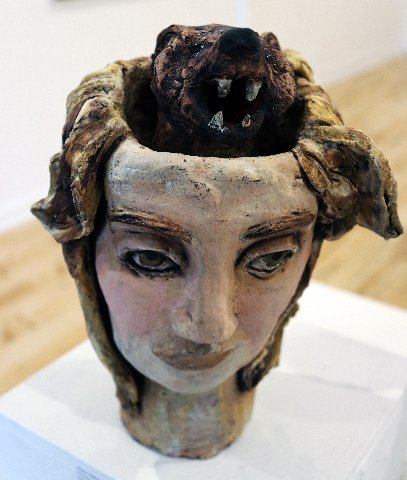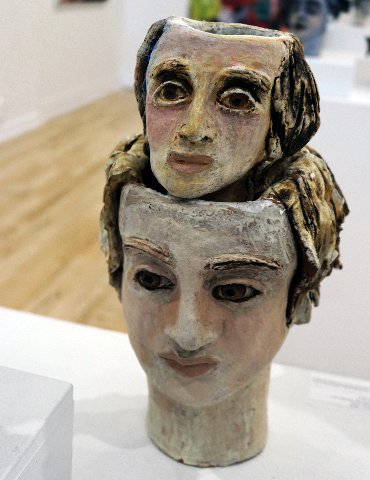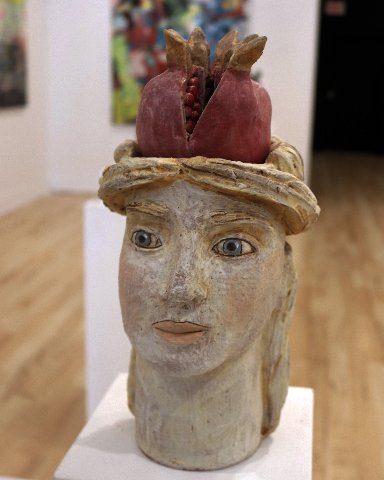Women You Should Know
Begging the Question at Gallery 51
By: Charles Giuliano - Sep 30, 2019
Women You Should Know
Conceived by Arthur De Bow
Artists: Galen Cheney, Laura Christensen, Sara Ferrel Okamura, Karin Stack and Dianne Sullivan
Gallery 51
51 Main Street
North Adams, Mass. 01247
September 26 to November 23
By any measure the current exhibition at Gallery 51 in North Adams is superb.
There is a compelling synergy that threads through work by five artists all of whom live and work in the Berkshires. Gestural abstraction informs the large paintings of Galen Cheney and Sara Ferrel Okamura. There is lyrical whimsy in the narratives of ceramic heads by Dianne Sullivan and enhanced vintage photographs by Laura Christensen. For counterpoint there are panoramic, minimalist photographic landscapes by Karin Stack.
The project Women You Should Know was initiated by former gallery director Arthur De Bow. It has been completed by the current MCLA interim director Tammara Leminen.
A statement of intent by De Bow is posted in the exhibition. It documents the egregious neglect of women artists, both historically, and to this day. The polemical signature of the project, however, distracts from appreciation of the work itself. An irony is that I do in fact know the work of all but one of these artists, Karin Stack.
While the curators suggest that we should “know” these artists it is disappointing that the gallery provides little information about them. There is no handout to assist visitors. The statement by De Bow discusses the political motivation for the show but not the actual works on display. In the manner of a theatre playbill we would have benefited from biographical thumbnails of the artists.
Last year, during a holiday week in Stowe, Vermont we visited a since closed gallery that exhibited work by Cheney. We also viewed the work when she maintained a studio/ gallery on Eagle Street. Moving forward she is slated for the December show at Real Eyes Gallery in Adams.
The gestural paintings of Cheney have roots in abstract expressionism. For this viewer they evoke the under appreciated works of Grace Hartigan. Her work represents an example of the neglect that De Bow discusses. The colors of one of Cheney’s paintings remarkably and oddly channeled de Kooning’s pink fleshy colors of the Women series.
One feels the thrust and energy as Cheney attacks the canvas. The surfaces are built up in strong, textured planes of colors that blend, clash, complement and contradict. They create a lively visual conversation that dances before us with moosh magique.
A wall at the back of the space creates an alcove or mini gallery setting apart a diverse display of paintings, large and small, by Sara Ferrel Okamura. The walls are painted black which pops the pictures. Each work is quite different as the artist explores many approaches. There is an extensive vocabulary of techniques. A large work with a variety of forms relates to the manner of Arthur Dove. He was another artist who is difficult to pin down other than, as with Ferrel Okamura, a commonality for the evocatively poetic. Her work was shown during the summer of 2018 in the windows of the annex to Gallery 51.
It has been some time since viewing the witty, figurative, ceramic sculptures of Dianne Sullivan. Before moving to a home and studio in town she frequently was included in exhibitions at the Eclipse Mill Gallery and in Open Studios. It’s always fun to see what she is up to. In the center of the space is a cluster of heads of women. They all improbably and comically have something growing out of their heads. Often heads within heads. It is a way of suggesting what women have on their minds. About which, limited by what feminist art historians discuss as “The Male Gaze,” I haven’t a clue. Sullivan, however, provides evocative clues that make me want to know more.
The enhanced vintage photographs of Laura Christensen have been shown quite often at Gallery 51 going back to former curator Jonathan Secor. They are crisp and meticulous works in which the framing and presentation are an essential element of the aesthetic. It is assumed that the images are found objects. They become enhanced readymades in the tradition of Dada and Surrealism. The generally small pieces have been installed in two niches. That frames them and draws us in for close encounters. We are rewarded with surprises that explode in our subconscious. We wonder why a Victorian era woman has wings or a seated girl has petals that morph her into a little flower.
This was my first encounter with the minimalist, landscape panoramas of Karin Stack. It would be helpful to have more information about her. She presents four photographic pieces stacked as a grid. They are monochromatic in a manner that edges into paintings.
Now that we “know” these five artists, verifying the thesis of De Bow, this is likely to be the only “review” of the evocative exhibition. In the Berkshires, regardless of gender, artists get underwhelming media attention.

